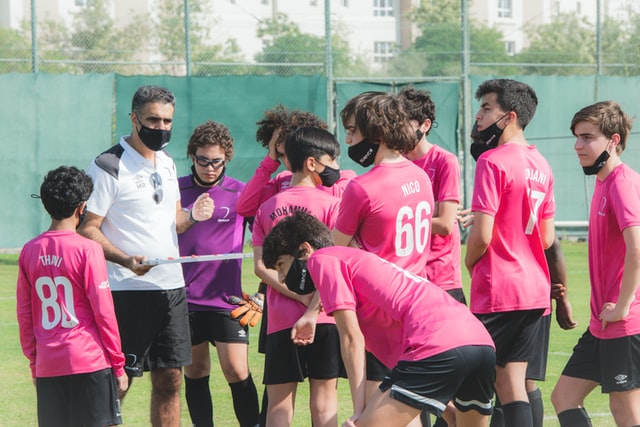A Tale of Two Coaches

by Terry L. Futrell
“I don’t need this crap inside,” shouted the angry coach to the five basketball players gathered around him during the timeout. Although his team was ahead at this point in the game, the coach was very unhappy with their performance. For most of the game, he had put on his own performance, much like a mighty lion tamer. Rather than use a physical whip, he had publicly whipped his players into obedience with words of harsh criticism directed at first one player, then another.
But these were professionals, you might say, and they were paid to perform perfectly. No, they weren’t professionals. Well, surely they were college players, preparing for the big money of the pros and deserving of such high expectations. No, they weren’t college players either. Neither were they in high school. The simple fact is that these players were middle school kids who should have been having the most fun of their lives.
Instead, their game of basketball had been turned into a time of humiliation and pain. Sure, they were winning on the scoreboard, but there was no joy of victory. How did these kids respond to such treatment? As one might predict, they demonstrated on the basketball court the same offensive behavior portrayed by their coach at side court. Using their superior physical size to maximum advantage, every opportunity was taken to throw an elbow or push their undersized opponents around the court.
In stark contrast, I looked to the other end of the gymnasium where the coach patiently guided and encouraged his team as they battled against their much larger and more experienced opponents. Rather than shouting words of criticism that humiliated players before the large crowd of fans, one could see him place his arm around the shoulder of a player, gently offering encouragement and direction. Were his players motivated by this positive approach? You bet!
After what initially appeared to be a blowout by their opponents, these kids fought bravely, and most likely beyond their capabilities. They refused to give up, and with only moments left in the game, had almost evened the score with their opponents. No, they didn’t pull off a miracle and win the game – at least not by the score on the scoreboard. However, these kids were the true winners in the gymnasium that evening. They had given their best and could relish in the joy of knowing that they fought the good fight.
But what about the angry coach described above – is he an isolated example? Unfortunately, he is only one of many that I have witnessed demonstrate such behavior in this area over the past few years at both the middle and high school levels. Why is such behavior tolerated by school administrators and school boards? If the same behavior were demonstrated by a classroom teacher, would we not demand their immediate dismissal?
Perhaps the real answer lies with the fans in the bleachers. Have we fans reached the point at which we expect victory at any cost? Have we lost the ability to applaud kids who give their best but who do not finish with the highest score?
There is a key principle that I have been taught to apply in dealing with employees on my job. The principle is simple – maintain employee self-esteem when coaching, disciplining, or correcting. You may substitute player, student, child, or whatever for employee and the principle applies equally well. We all cherish self-esteem!
Those who choose to try to improve performance by harshly criticizing individuals in front of their peers or a crowd of fans do nothing more than humiliate and foster resentment. There are other ways to hold players to high standards without harsh public criticism. True motivation and improvement come through positive personal interaction and encouragement. Some coaches have learned this and serve as excellent role models as they develop both the athletic skills and the character of their players. Unfortunately, some coaches have not learned this and model the wrong behaviors – they should hang up their whistles and find something else to do that does not involve working with young people.